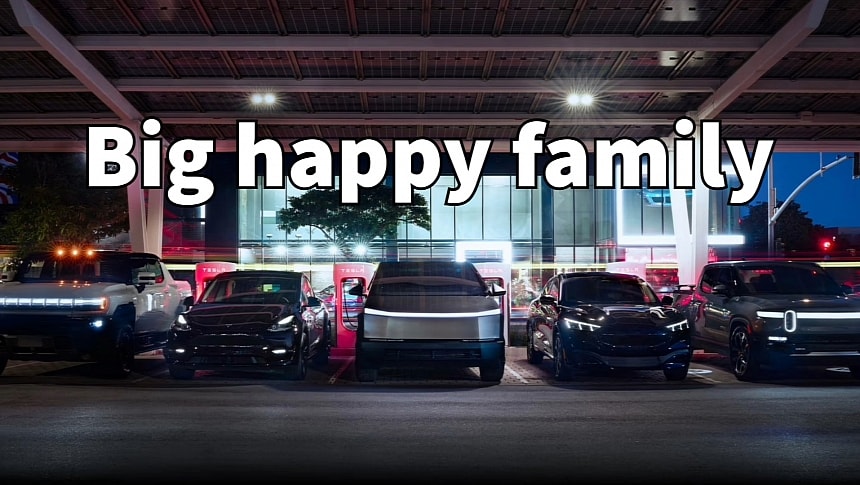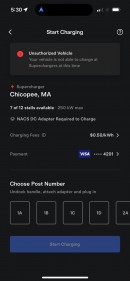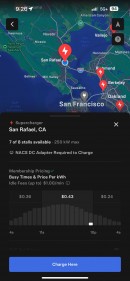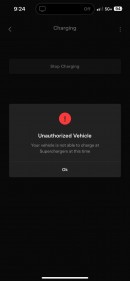Tesla announced opening its Supercharger network to carmakers who signed the NACS deal, beginning with Ford. The move caused controversies among Tesla owners, who don't see this move as beneficial. Owners of non-Tesla EVs are also intrigued about how this might work, so here's everything you need to know.
Tesla opened its Superchargers to third-party electric vehicles in selected markets a few years ago. The move started in Europe, where Tesla shares the same CCS2 connector with the rest of the industry. In 2023, Tesla also allowed owners of third-party EVs to charge at Superchargers fitted with a special adapter called Magic Dock. This involved installing the Tesla app and creating an account with Tesla. Charging pricing was higher for non-Tesla EVs, but owners could lower their rates by committing to a $12.99 monthly subscription.
Last year, Tesla signed deals with other carmakers to adopt the North American Charging Standard (NACS). This was the most important step towards unifying the charging specifications, which was set to boost EV adoption significantly. Ford was the first to sign the deal, followed by GM and Rivian. Soon, all major carmakers, one by one, announced the adoption of the NACS standard, with an essential perk for their users: access to Tesla's Supercharger network.
Ford owners don't need to install the Tesla app or create a Tesla account, as Ford announced earlier. They can initiate a charging session from the FordPass app, the car's infotainment screen, or simply by plugging in if they have already enrolled their EV in the Plug & Charge system. However, this would only allow them to charge at the higher, pay-as-you-go tariffs, similar to those using the Magic Dock adapters. If they want the same prices as Tesla owners, they must use the Tesla app and pay the $12,99 monthly subscription.
Moreover, the charging session must be initiated from the Tesla app, or you will not benefit from the more favorable pricing. So far, Ford has not completely integrated its network with Tesla. Things will probably change in the future, especially when new models will start shipping with NACS ports toward the end of the year. I presume the same will apply to owners of other EV brands when they also get access this spring.
More than that, the owners of non-Ford EVs would get an "Unauthorized vehicle" warning, meaning that the station knows they don't have a Ford. Some even tried to trick the system by saying they owned a Ford model. The Tesla app allows them to choose the stall and initiate charging, but as soon as the vehicle is plugged in, the charging stops, and the error message pops up in the app.
There could be several reasons why this happens. For instance, Tesla could use a whitelist, only charging vehicles that Ford enrolled in its system. The Ford EVs must encode identification in the communications while negotiating a charge with the Supercharger. It could also be that EVs need a software update before being able to use the Superchargers. It's too early to rule out this possibility, but we'll know more in the coming days as more people will charge at Tesla stations.
While Tesla presented the move as necessary to fulfill its mission, not all Tesla owners were convinced. Many think sharing the Superchargers with non-Tesla EVs will make the wait lines longer and sink availability. Tesla Superchargers are already congested, and it's hard to get a charge at peak hours without spending a lot of time in line.
To make matters worse, non-Tesla EVs have the charge port placed in awkward positions, forcing them to block more than one spot. This annoys Tesla owners more than sharing the stations with other brands. Many wonder how Tesla would signal in the app that a charge spot is blocked, even when the charger is not in use. These things will likely be sorted on the fly as everyone gets accustomed. If that's any comfort, sharing the Superchargers in Europe with non-Tesla EVs is a non-issue, despite Tesla not being the dominant EV brand.
More than 60 percent of EVs in North America are Tesla, so other brands should be even less of a problem. Not all Superchargers will be available to non-Tesla EVs, as Tesla wants to reserve a number of them for its own customers. The EV maker will also expand the Supercharger network faster to accommodate other brands, which will also help Tesla owners in the long run.
By serving all EV brands in North America, Tesla can tap into government money to accelerate the Supercharger expansion. More stations will also help it expand its addressable market to virtually all the EVs sold. Owners of non-Tesla EVs will be incentivized to pay for the Supercharger membership, turning the Tesla Services division into a significant profit center.
Automotive expert Sam Fiorani from AutoForecast Solutions believes Tesla could generate $6 billion to $12 billion a year by 2030 from its Supercharger network. Exposing more people to the Tesla ecosystem might also generate sales for EVs and energy products. Tesla has been very good at harnessing all possible revenue streams, and opening up the Supercharger network would vastly expand its customer base.
Last year, Tesla signed deals with other carmakers to adopt the North American Charging Standard (NACS). This was the most important step towards unifying the charging specifications, which was set to boost EV adoption significantly. Ford was the first to sign the deal, followed by GM and Rivian. Soon, all major carmakers, one by one, announced the adoption of the NACS standard, with an essential perk for their users: access to Tesla's Supercharger network.
How much do Ford EV owners have to pay at Tesla Supercharger stations?
The terms of the deals were similar, but the exact details were kept under wraps. Last year, GM CEO Mary Barra said GM owners would be treated the same as Tesla owners when charging at the Supercharger stations. This included paying the same price, an essential advantage considering that those using Magic Dock adapters would have to pay a significant premium or a Tesla subscription. Not every carmaker apparently got the same deal, or Mary Barra did not understand the terms. Ford owners who charged their EVs at a Supercharger under the NACS deal had to pay the higher price.Ford owners don't need to install the Tesla app or create a Tesla account, as Ford announced earlier. They can initiate a charging session from the FordPass app, the car's infotainment screen, or simply by plugging in if they have already enrolled their EV in the Plug & Charge system. However, this would only allow them to charge at the higher, pay-as-you-go tariffs, similar to those using the Magic Dock adapters. If they want the same prices as Tesla owners, they must use the Tesla app and pay the $12,99 monthly subscription.
Moreover, the charging session must be initiated from the Tesla app, or you will not benefit from the more favorable pricing. So far, Ford has not completely integrated its network with Tesla. Things will probably change in the future, especially when new models will start shipping with NACS ports toward the end of the year. I presume the same will apply to owners of other EV brands when they also get access this spring.
Can you charge other EVs if you register them as a Ford model?
As soon as Tesla announced the debut of the NACS deal for Ford EV owners, people wanted to try it. Not only Ford owners flocked to Supercharger stations, but also those driving other EVs. While the former crowd discovered that the Supercharger experience is buttery smooth, owners of other EV brands left the chargers disappointed. So far, it takes a Ford to charge at a non-Magic Dock Supercharger. All other EVs will not start charging.More than that, the owners of non-Ford EVs would get an "Unauthorized vehicle" warning, meaning that the station knows they don't have a Ford. Some even tried to trick the system by saying they owned a Ford model. The Tesla app allows them to choose the stall and initiate charging, but as soon as the vehicle is plugged in, the charging stops, and the error message pops up in the app.
There could be several reasons why this happens. For instance, Tesla could use a whitelist, only charging vehicles that Ford enrolled in its system. The Ford EVs must encode identification in the communications while negotiating a charge with the Supercharger. It could also be that EVs need a software update before being able to use the Superchargers. It's too early to rule out this possibility, but we'll know more in the coming days as more people will charge at Tesla stations.
What do Tesla owners think about sharing Superchargers with other EVs?
While Tesla presented the move as necessary to fulfill its mission, not all Tesla owners were convinced. Many think sharing the Superchargers with non-Tesla EVs will make the wait lines longer and sink availability. Tesla Superchargers are already congested, and it's hard to get a charge at peak hours without spending a lot of time in line.
To make matters worse, non-Tesla EVs have the charge port placed in awkward positions, forcing them to block more than one spot. This annoys Tesla owners more than sharing the stations with other brands. Many wonder how Tesla would signal in the app that a charge spot is blocked, even when the charger is not in use. These things will likely be sorted on the fly as everyone gets accustomed. If that's any comfort, sharing the Superchargers in Europe with non-Tesla EVs is a non-issue, despite Tesla not being the dominant EV brand.
More than 60 percent of EVs in North America are Tesla, so other brands should be even less of a problem. Not all Superchargers will be available to non-Tesla EVs, as Tesla wants to reserve a number of them for its own customers. The EV maker will also expand the Supercharger network faster to accommodate other brands, which will also help Tesla owners in the long run.
What is Tesla's goal with Supercharger access for non-Tesla EVs?
Tesla might say all it wants about the mission of replacing combustion vehicles and advancing electromobility. In the end, it's all about money. Tesla put a lot of effort into the Supercharger network, even when it was cash-strapped. Understandably, it wants a return on its investment now that it has become the world's largest and most reliable charging network.By serving all EV brands in North America, Tesla can tap into government money to accelerate the Supercharger expansion. More stations will also help it expand its addressable market to virtually all the EVs sold. Owners of non-Tesla EVs will be incentivized to pay for the Supercharger membership, turning the Tesla Services division into a significant profit center.
Automotive expert Sam Fiorani from AutoForecast Solutions believes Tesla could generate $6 billion to $12 billion a year by 2030 from its Supercharger network. Exposing more people to the Tesla ecosystem might also generate sales for EVs and energy products. Tesla has been very good at harnessing all possible revenue streams, and opening up the Supercharger network would vastly expand its customer base.











